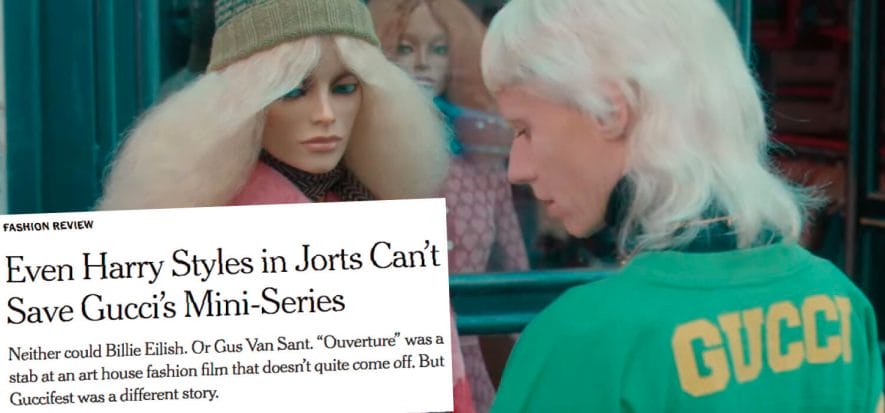Vanessa Friedman did not like Alessandro Michele’s latest gimmick. Of course, it has to do with the fact that expectations, as with everything related to Kering flagship brand, were high. But the New York Times fashion director is more than disappointed. The first NYT journalist criticises GucciFest, the online review created by the designer from Rome. “It does not represent a real turning point in the relationship between cinema and fashion – she writes -. In the end, it’s boring”.
Vanessa Friedman criticises GucciFest
The premise is that Friedman, since the coronavirus pandemic imposed the (partial or total) stop of the usual fashion weeks, hoped for something more from brands. That is, she hoped that brands “instead of falling into the comfort zone of commercials, would propose a different form of storytelling”. In hindsight, she can say that “with a few exceptions, it didn’t happen”.
Friedman, therefore, placed the last dose of trust in Michele, but even this, in the end, has been betrayed. “Overture of Something That Never Ended, aka the Gucci miniseries, is well-intentioned – she says -, beautifully shot, sometimes stimulating, but in the end boring”. What does she mean? The chronicle of the day by actress Silvia Calderoni “is both pedantic and surreal. Even pedantically surreal”.
Between cinema and fashion
The NYT journalist is not against the work of director Gus Van Sant. Friedman insists on GucciFest’s inability to hold together cinematic value and fashion communication. “At the press conference, Michele said he wanted to set clothes free – she remembers -, so that they were not imprisoned in shops anymore. The miniseries does that”.
From a commercial point of view, it could also work: “Gucci collection lives and breathes on the characters, sometimes suffocatingly so – continues Friedman -. There may be someone ready to buy it”. The problem is that “among all the dresses and skirts and shorts – she concludes – there aren’t really any new ideas: the only new idea is the series itself”.
A matter of style
Similar impressions are also found from other journalists in press reviews. Film critic Marco Giusti, for example, praises Gus Van Sant: “I find many more stimuli, including cultural and visual ones, and many more stars – he writes on Dagospia – than in a lot of TV, including talk shows-xfactor-Netflix series, which we are forced to see due to the pandemic”.
But there are also those who are beginning to problematise, as does NSSmag, Gucci’s stylistic history. Michele’s impact was such that “the memory of what the brand was before its arrival begins to fade”. The elegance, minimalism and sensuality of the lines of Tom Ford and Frida Giannini are now a thing of the past, together with their commitment to win back the genuinely high end audience.
With the designer from Rome came esotericism, fluid identity and, above all, the culture of the logo. “The transition from old to new fashion is all here: the label is the symbol of a shift that, more than involving designers, concerns the culture surrounding fashion”.
Read also:
- Frida Giannini, doubts about today’s luxury and what brands need
- Marco Bizzarri displays confidence and anticipates how Gucci will be










